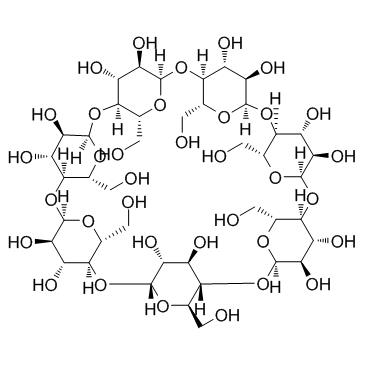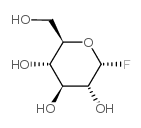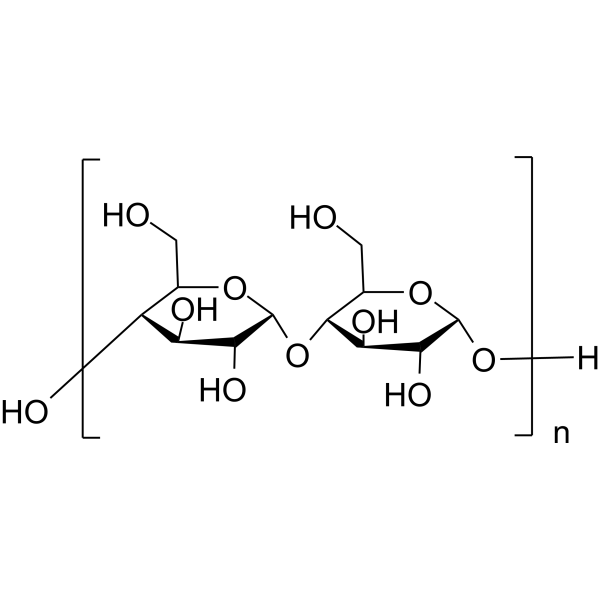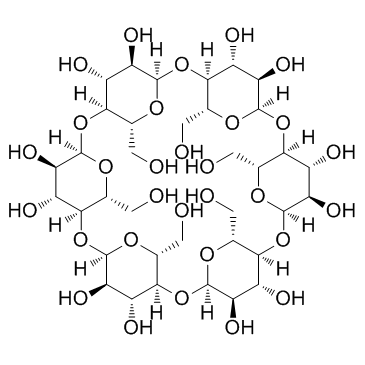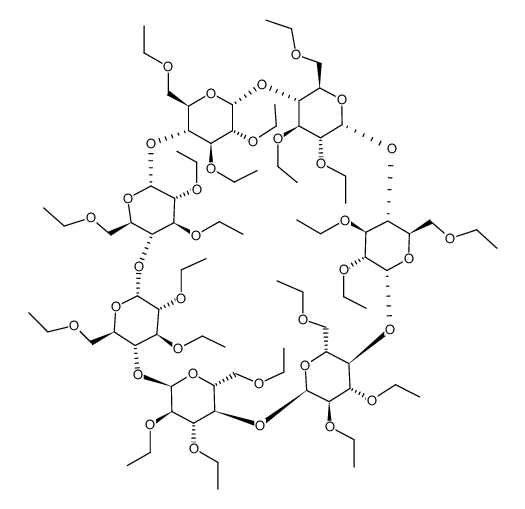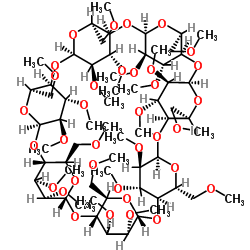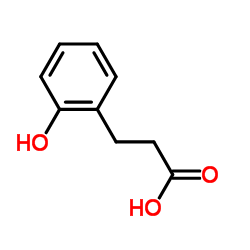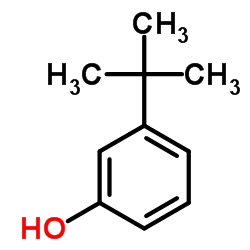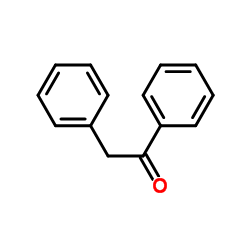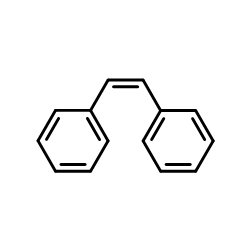7585-39-9
| 中文名 | β-环糊精 |
|---|---|
| 英文名 | β-cyclodextrin |
| 中文别名 |
beta-环糊精
B-环糊精 Beta-环状糊精 β-环状糊精 倍他环糊精 环七糖 环麦芽七糖 |
| 英文别名 |
FEMA 4028
cycloheptaamylose EINECS 231-493-2 Cycloglucans betadex CARAWAY Cycloheptaglucosan Cvclodextrin beta-Cyclodextrin hydrate Klep (1R,3S,5R,6S,8R,10R,11S,13R,15R,16S,18R,20R,21S,23R,25R,26S,28R,30R,31S,33S,35S,36S,37S,38R,39R,40R,41R,42R,43R,44R,45R,46R,47R,48R,49R)-5,10,15,20,25,30,35-Heptakis(hydroxymethyl)-2,4,7,9,12,14,17,19 ;,22,24,27,29,32,34-tetradecaoxaoctacyclo[31.2.2.2.2.2.2.2.2]nonatetracontane-36,37,38,39,40,41,42,43,44,45,46,47,48,49-tetradecol beta-cycloamylose BW 7 CavaMax W 7 beta-cyclodextrin cyclomaltoheptaose Celdex N |
| 描述 | β-Cyclodextrin 是一种环状多糖,由 α-D-吡喃型葡萄糖单元通过 α-(1,4) 糖苷键连接而成。β-Cyclodextrin 通常用于增强药物的溶解度。 |
|---|---|
| 相关类别 | |
| 体外研究 | β-环糊精(β-环糊精;β-CD)是由α-(1,4)型键连接的七单位葡萄糖(α-D-吡喃葡萄糖)组成的环状多糖,具有亲水性外表面和疏水性内腔[1]。在制药工业中,β-环糊精(β-CD)经常被用于增强药物的溶解度,如吲哚美辛,柚皮苷,塞来昔布和柠檬酸[2]。 |
| 参考文献 |
| 密度 | 1.6±0.1 g/cm3 |
|---|---|
| 沸点 | 1541.2±60.0 °C at 760 mmHg |
| 熔点 | >260ºC (dec.)(lit.) |
| 分子式 | C42H70O35 |
| 分子量 | 1134.984 |
| 闪点 | 885.9±32.9 °C |
| 精确质量 | 1134.369751 |
| PSA | 554.05000 |
| LogP | -6.57 |
| 外观性状 | 白色粉末 |
| 蒸汽压 | 0.0±0.6 mmHg at 25°C |
| 折射率 | 1.591 |
| 储存条件 | +15C to +30C |
| 水溶解性 | 1 M NaOH: 50 mg/mL |
| 更多 | 一、物性数据 1. 性状:白色至淡黄色粉末,稍有果胶特有香气,味微甜且略带酸味。 2. 密度(g/mL,25/4℃):0.7 3. 相对蒸汽密度(g/mL,空气=1):不确定 4. 熔点(ºC):116 5. 沸点(ºC,0.67kpa或5 mmHg):不确定 6. 折射率:不确定 7. 闪点(ºC):不确定 8. 比旋光度(ºC):不确定 9. 自燃点或引燃温度(ºC)不确定 10. 蒸气压(kPa,25ºC):不确定 11. 饱和蒸气压(kPa,60ºC):不确定 12. 燃烧热(KJ/mol):不确定 13. 临界温度(ºC):不确定 14. 临界压力(KPa):不确定 15. 油水(辛醇/水)分配系数的对数值:不确定 16. 爆炸上限(%,V/V):不确定 17. 爆炸下限(%,V/V):不确定 18. 溶解性:能溶于水,不溶于乙醇和其他有机溶剂。 |
Synonym:Cycloheptaamylose; Alpha-3-Schardinger Dextrin; C Section 2 - COMPOSITION, INFORMATION ON INGREDIENTS
Risk Phrases: None Listed. Section 3 - HAZARDS IDENTIFICATION EMERGENCY OVERVIEW
The toxicological properties of this material have not been fully investigated. Potential Health Effects Eye: May cause eye irritation. Skin: May cause skin irritation. Ingestion: May cause irritation of the digestive tract. The toxicological properties of this substance have not been fully investigated. Inhalation: May cause respiratory tract irritation. The toxicological properties of this substance have not been fully investigated. Chronic: No information found. Section 4 - FIRST AID MEASURES Eyes: Flush eyes with plenty of water for at least 15 minutes, occasionally lifting the upper and lower eyelids. Get medical aid. Skin: Get medical aid. Flush skin with plenty of water for at least 15 minutes while removing contaminated clothing and shoes. Wash clothing before reuse. Ingestion: Never give anything by mouth to an unconscious person. Get medical aid. Do NOT induce vomiting. If conscious and alert, rinse mouth and drink 2-4 cupfuls of milk or water. Inhalation: Remove from exposure and move to fresh air immediately. If not breathing, give artificial respiration. If breathing is difficult, give oxygen. Get medical aid. Notes to Physician: Section 5 - FIRE FIGHTING MEASURES General Information: As in any fire, wear a self-contained breathing apparatus in pressure-demand, MSHA/NIOSH (approved or equivalent), and full protective gear. During a fire, irritating and highly toxic gases may be generated by thermal decomposition or combustion. Runoff from fire control or dilution water may cause pollution. Extinguishing Media: Use agent most appropriate to extinguish fire. Use water spray, dry chemical, carbon dioxide, or appropriate foam. Section 6 - ACCIDENTAL RELEASE MEASURES General Information: Use proper personal protective equipment as indicated in Section 8. Spills/Leaks: Vacuum or sweep up material and place into a suitable disposal container. Clean up spills immediately, observing precautions in the Protective Equipment section. Avoid generating dusty conditions. Provide ventilation. Section 7 - HANDLING and STORAGE Handling: Wash thoroughly after handling. Remove contaminated clothing and wash before reuse. Use with adequate ventilation. Minimize dust generation and accumulation. Avoid contact with eyes, skin, and clothing. Keep container tightly closed. Avoid ingestion and inhalation. Storage: Store in a tightly closed container. Store in a cool, dry, well-ventilated area away from incompatible substances. Section 8 - EXPOSURE CONTROLS, PERSONAL PROTECTION Engineering Controls: Facilities storing or utilizing this material should be equipped with an eyewash facility and a safety shower. Use adequate ventilation to keep airborne concentrations low. Exposure Limits CAS# 7585-39-9: Personal Protective Equipment Eyes: Wear appropriate protective eyeglasses or chemical safety goggles as described by OSHA's eye and face protection regulations in 29 CFR 1910.133 or European Standard EN166. Skin: Wear appropriate protective gloves to prevent skin exposure. Clothing: Wear appropriate protective clothing to minimize contact with skin. Respirators: Follow the OSHA respirator regulations found in 29 CFR 1910.134 or European Standard EN 149. Use a NIOSH/MSHA or European Standard EN 149 approved respirator if exposure limits are exceeded or if irritation or other symptoms are experienced. Section 9 - PHYSICAL AND CHEMICAL PROPERTIES Physical State: Crystalline powder Color: white Odor: none reported pH: Not available. Vapor Pressure: Not available. Viscosity: Not available. Boiling Point: Not available. Freezing/Melting Point: 310 deg C Autoignition Temperature: Not applicable. Flash Point: Not applicable. Explosion Limits, lower: Not available. Explosion Limits, upper: Not available. Decomposition Temperature: Solubility in water: Specific Gravity/Density: Molecular Formula: C42H70O35 Molecular Weight: 1135.00 Section 10 - STABILITY AND REACTIVITY Chemical Stability: Stable under normal temperatures and pressures. Conditions to Avoid: Incompatible materials, dust generation, excess heat, strong oxidants. Incompatibilities with Other Materials: Oxidizing agents. Hazardous Decomposition Products: Carbon monoxide, irritating and toxic fumes and gases, carbon dioxide. Hazardous Polymerization: Has not been reported. Section 11 - TOXICOLOGICAL INFORMATION RTECS#: CAS# 7585-39-9: GU2293000 LD50/LC50: CAS# 7585-39-9: Oral, mouse: LD50 = >12500 mg/kg; Oral, rat: LD50 = 18800 mg/kg. Carcinogenicity: Beta-Cyclodextrin hydrate - Not listed by ACGIH, IARC, or NTP. Other: See actual entry in RTECS for complete information. Section 12 - ECOLOGICAL INFORMATION Section 13 - DISPOSAL CONSIDERATIONS Dispose of in a manner consistent with federal, state, and local regulations. Section 14 - TRANSPORT INFORMATION IATA Not regulated as a hazardous material. IMO Not regulated as a hazardous material. RID/ADR Not regulated as a hazardous material. Section 15 - REGULATORY INFORMATION European/International Regulations European Labeling in Accordance with EC Directives Hazard Symbols: Not available. Risk Phrases: Safety Phrases: S 24/25 Avoid contact with skin and eyes. S 28A After contact with skin, wash immediately with plenty of water. S 37 Wear suitable gloves. S 45 In case of accident or if you feel unwell, seek medical advice immediately (show the label where possible). WGK (Water Danger/Protection) CAS# 7585-39-9: 0 Canada CAS# 7585-39-9 is listed on Canada's DSL List. CAS# 7585-39-9 is not listed on Canada's Ingredient Disclosure List. US FEDERAL TSCA CAS# 7585-39-9 is listed on the TSCA inventory. SECTION 16 - ADDITIONAL INFORMATION N/A |
CHEMICAL IDENTIFICATION
HEALTH HAZARD DATAACUTE TOXICITY DATA
|
| 个人防护装备 | Eyeshields;Gloves;type N95 (US);type P1 (EN143) respirator filter |
|---|---|
| 危害码 (欧洲) | Xi |
| 风险声明 (欧洲) | R36/37/38 |
| 安全声明 (欧洲) | S26-S36 |
| 危险品运输编码 | NONH for all modes of transport |
| WGK德国 | 2 |
| RTECS号 | GU2293000 |
| 海关编码 | 3505100000 |
| 上游产品 8 | |
|---|---|
| 下游产品 8 | |
| 海关编码 | 3505100000 |
|---|


